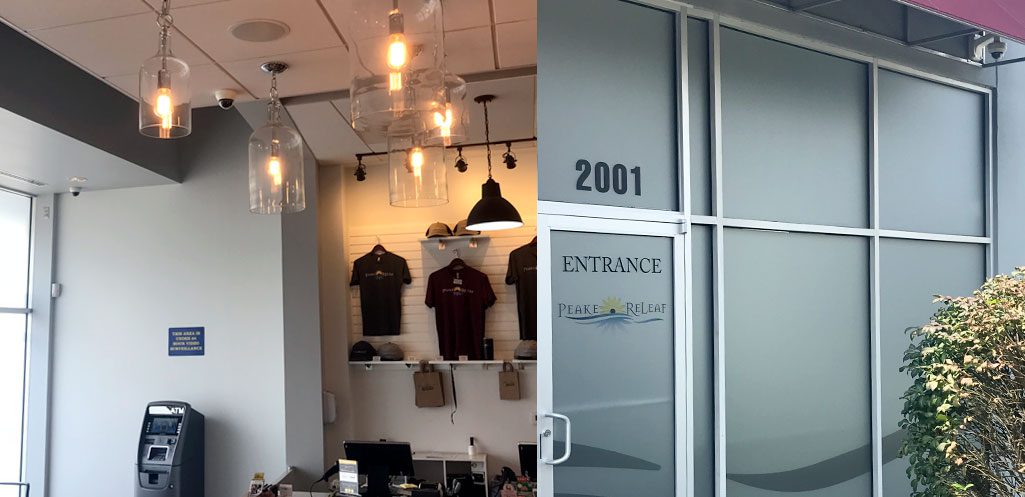
SPONSORED
Hanwha Techwin Helps Cannabis Dispensary Meet Stringent Regulatory Requirements
In 2016 three longtime friends opened Peake ReLeaf, a local, independent medical cannabis dispensary located in Rockville, Maryland. Through its recently-opened 4,200-square-foot facility, the company provides a wide range of cannabis and cannabis-infused products to patients with a valid medical marijuana certification to treat a variety of qualifying conditions such as anorexia, cachexia, chronic or severe pain, glaucoma, PTSD, seizures, severe nausea, and severe or persistent muscle spasms.
While Peake ReLeaf faces the ordinary challenges of any small business as a cannabis dispensary, it is also subject to a number of stringent Maryland Medical Cannabis Commission (MMCC) regulations which include strict requirements for video surveillance that dictate video quality, system performance, storage and other factors.
After much research, they decided to contract Skyline Technology Solutions for their surveillance system because of their transparency, robust IT background and previous experience with medical marijuana facilities.
Based on the regulatory needs and many conversations about how they wanted their business to operate, Skyline recommended that PeakReleaf install cameras from Hanwha Techwin America to secure both the interior and exterior of the facility.
For indoor use, Skyline installed Hanwha Techwin Wisenet QND-6010R vandal-resistant dome cameras that offer clear images so facial features could be easily identified. For outdoor use, Peake ReLeaf chose the Wisenet QNV-7080R cameras that provide 4-megapixel image quality with true wide dynamic range (WDR), motion detection, defocus detection and tampering detection at an affordable price. Both Wisenet camera models include WiseStream II compression technology that can reduce bandwidth by 50%. WiseStream II dynamically controls encoding, balancing quality and compression according to movement in the image. As a result, the bandwidth and storage requirements of the high-resolution images captured by each camera are significantly reduced, allowing Peake ReLeaf to meet the MMCC storage requirements in a cost-effective manner.
In addition to the Hanwha cameras, Peake ReLeaf has two Wisenet XRN NVRs (one 8-channel and one 16-channel) for on-site viewing and uses Smart Viewer software for its video management system, as well as Cam Cloud for moving video off-site to meet the MMCC storage regulation.
“Our goal was to find cameras that would enable us to capture facial details with precision at every entrance and exit of the controlled zones, 24 hours a day,” explained Aaron Kahn, Commercial Team Leader at Skyline Technology Solutions. “But we also needed to put in place a storage system that could handle 24/7 recording with offsite data storage and 48 hours of battery backup, which is an atypical requirement for most business security systems. As with all security systems, the network is important but due to the regulations in MD, the design of the network infrastructure for the cannabis industry is even more crucial. Securing adequate bandwidth, discussing other IT systems and the impact they will have on a network and applying cybersecurity best practices are discussed as early as camera and access control needs, to ensure a smooth inspection process.”
While there is no direct integration between the Hanwha cameras and Peake ReLeaf’s Feenics access control system, it is easy for the company to correlate access issues with time-stamped video events for review and investigation.
“I can get an alert when a door is propped open or if anything is not working and see which doors have been accessed,” says Nate Miller, one of the founding members and the company’s Executive Vice President. “So, if an employee or security guard says someone accessed door one at 10:15 in our records, I can reference camera one at 10:15 and correlate that with the video evidence.”
The Hanwha cameras make it easier to identify and view video thanks to their ability to flag video based on motion or other factors using onboard video analytics.
“If you’re trying to reference something there are bar graphs of when those cameras detected motion. So you don’t have to wade through all of that footage to find what you’re looking for,” added Miller.
Since the dispensary’s opening, Hanwha cameras have continuously provided the performance and capabilities to ensure Peake ReLeaf remains in compliance with the strict MMCC requirements, even as they continue to evolve moving forward.
“Hanwha cameras offer us the video quality we need, and the cameras’ video analytic and other capabilities provide us with the flexibility that will allow us to quickly adapt to the inevitable regulatory changes that will come as we navigate this very new industry in Maryland,” Miller said.